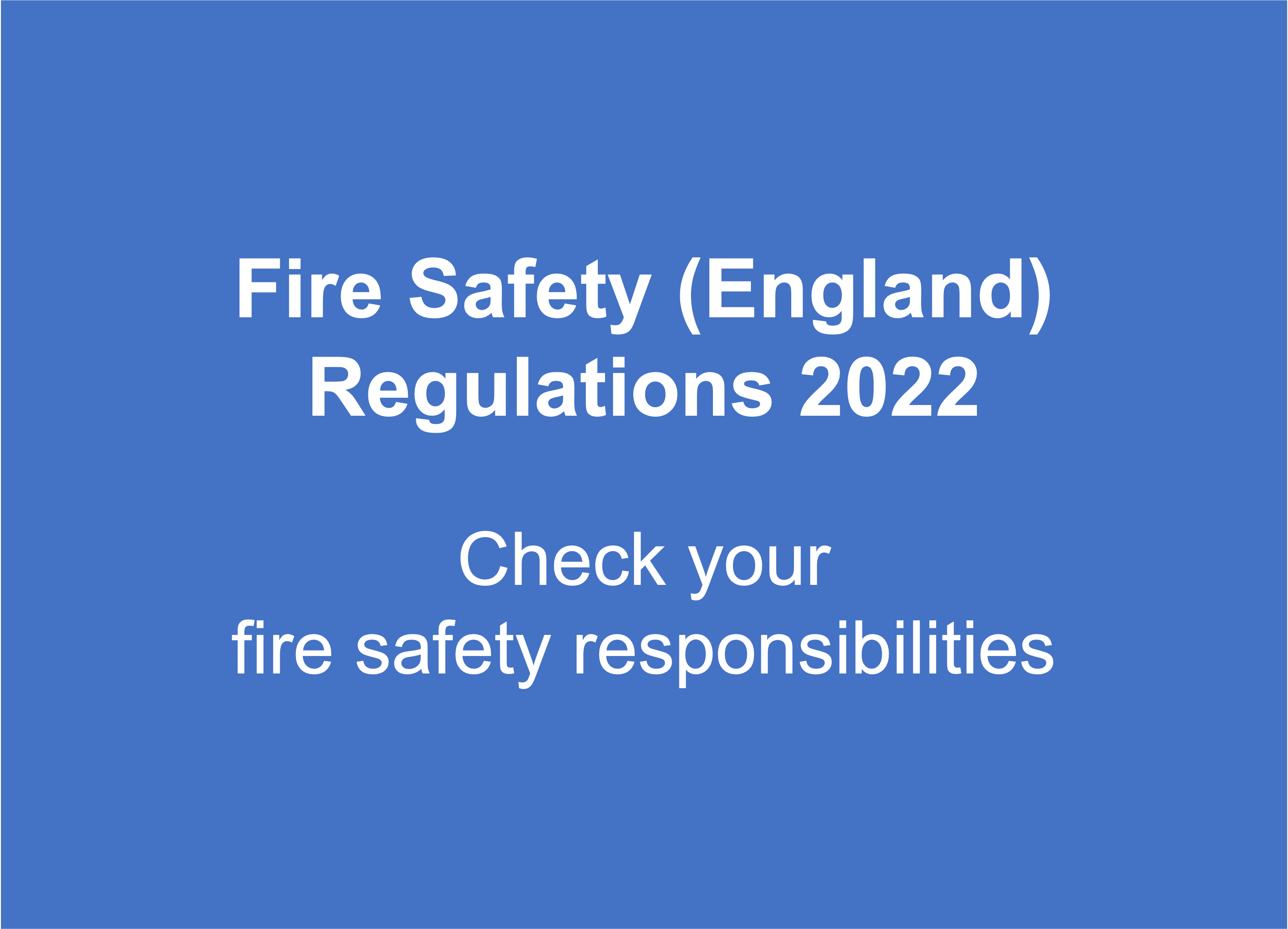From 1st October 2023, all buildings regulated by the Regulatory Reform (Fire Safety) Order 2005 (FSO) now need to comply with new fire safety guidelines. These guidelines are part of Phase 3 of the Home Office’s fire safety reform program, aimed at strengthening fire safety in all FSO-regulated premises.
Phase one was introduced by the Fire Safety Act 2021. Where a building contains two or more sets of domestic premises, the RRFSO will apply to the building’s structure (including balconies), external walls, and any common parts and all doors between the domestic premises and common parts. The Act commenced on 16 May 2022 for England and from 1 October 2021 for Wales.
The Fire Safety (England) Regulations 2022 introduced Phase Two in England from 23 January 2023. This phase introduced new requirements of displaying and issuing fire safety and fire door instructions to new occupiers and all occupiers every 12 months.
Phase 3 changes to RRFSO
Phase three is the next, significantly changing the RRFSO by Section 156 Building Safety Act 2022. The changes commence on 1 October 2023 and apply to England and Wales unless specified otherwise.
Risk assessment (article 9 RRFSO)
It’s always been the case that a responsible person (usually the landlord or agent for our audience) must conduct a fire risk assessment where common areas exist. However, it only needed to be in writing if the responsible person employed five or more persons.
The requirement of having employees is removed, and the wording is now changed to:
As soon as practicable after the assessment is made or reviewed, the responsible person must make a record of the assessment or review, which must, in particular, include the information detailed below:
The prescribed information is:
(a) the “findings” (so the record must include all findings, not just significant ones): of the assessment, including the measures which have been or will be taken by the responsible person pursuant to the Order; and
(b) any group of persons identified by the assessment as being especially at risk.
Assistance with the risk assessment
A new Article 9A is inserted into the RRFSO, introducing significant changes regarding who the responsible person may appoint to assist with the risk assessment.
Firstly, the ‘responsible person’, which could be a landlord or letting agent, is now required only to appoint someone to assist with conducting or reviewing a risk assessment if that person is deemed competent.
Secondly, the legislation defines what ‘competent’ means in this context. It states that a person is considered competent if they have enough training, experience, knowledge, and other qualities that would allow them to assist in making or reviewing the risk assessment effectively. This means landlords and letting agents must ensure that the person they choose to help with the risk assessment meets these criteria.
Finally, if the responsible person decides to appoint more than one person to assist with the risk assessment, they must ensure good cooperation between those appointed. This means landlords and letting agents must set up arrangements to ensure everyone involved works well together.
Fire safety arrangements
The RRFSO mandates that the ‘responsible person’ must create and implement appropriate arrangements for the effective planning, organisation, control, monitoring, and review of preventive and protective measures. These arrangements must be suitable considering the size of their undertaking and the nature of their activities. So, if you manage many properties or have complex operations, your arrangements must reflect that.
Moreover, the legislation now requires that these arrangements be recorded as the rule about having five employees is removed. This means landlords and letting agents must document their processes for planning, organising, controlling, monitoring, and reviewing their preventive and protective measures. This not only helps to ensure that these tasks are done correctly but also provides a record that can be referred to in the future or if any disputes or legal issues arise.
Provision of information to residents of domestic premises
A new Article 21A is inserted into the RRFSO, which brings in some new duties related to providing information to residents on domestic premises.
This duty applies to buildings containing two or more sets of domestic premises. So, if you’re responsible for such a building, these changes are relevant to you.
The ‘responsible person’ must now provide residents with clear and relevant information about fire safety matters. These include:
- The risks identified by the risk assessment.
- The preventive and protective measures in place
- The name of the responsible person and a UK address where they, or their representative, can accept notices and documents.
- The identity of any person appointed to assist with the risk assessment.
- The identity of any competent persons nominated by the responsible person.
- Any risks informed to the responsible person.
- Any other matters specified in regulations made by the relevant authority.
- The information should be provided at times and in a form specified in regulations made by the appropriate authority. The responsible person must also keep records of these fire safety matters.
Co-operation and co-ordination
Under Article 22 of the RRHSO, it is the current position that all responsible persons must work together to ensure compliance with the rules and prohibitions. The legislation also requires each responsible person to coordinate their compliance measures with those of the other responsible persons. Furthermore, you must make reasonable efforts to inform other responsible persons about any risks to relevant individuals that might arise from your activities.
These duties are extended from October 2023:
A responsible person must take reasonable steps to determine if any other responsible persons share or have duties regarding the premises. This means that if you oversee a property, you need to try to identify if others also have responsibilities for the same property.
The responsible person must also provide their name and a UK address to the other responsible persons. This address will be used for the receipt of notices and other documents.
Furthermore, the responsible person must inform the other responsible persons about the specific part of the premises for which they consider themselves accountable. They are also required to keep a record of this information. This means you must communicate and document your specific responsibilities regarding the property to the other responsible parties.
Provision of information to a new responsible person
The new legislation introduces specific obligations when a person ceases to be responsible for premises, and another person takes over that responsibility:
The outgoing, responsible person must provide the new responsible person with any relevant fire safety information they hold. This ensures that the new responsible person is fully informed about the fire safety situation of the premises.
Relevant fire safety information includes records of assessments and reviews, the identity of any person appointed to assist with these assessments, the name and UK address of any other responsible person, and the identity of any accountable person if the premises are a higher-risk building. It also includes any information given under Regulation 38 of the Building Regulations 2010 and any other matters specified in regulations made by the relevant authority. Records must be kept of the fire safety information.
This information should be provided at times and in a form under regulations (not published yet).
Co-operation with accountable persons (higher-risk buildings)
The new legislation introduces specific obligations for responsible persons about premises that include a residential unit in a higher-risk building:
The responsible person must take all reasonably practicable steps to find out if there are any accountable persons for the premises. An accountable person, as defined by the Building Safety Act 2022, has specific duties and responsibilities for the safety of the building.
If there are accountable persons, the responsible person must cooperate with them. This cooperation is necessary for the accountable persons to carry out their duties under the Building Safety Act 2022. This means that if you are a responsible person, you need to work collaboratively with any accountable persons to ensure the safety of the building.
The legislation provides definitions for terms such as “accountable person”, “higher-risk building”, and “residential unit” as per the Building Safety Act 2022.
According to the Building Safety Act 2022, a higher-risk building is a building in England that:
- Is at least 18 metres in height or has at least 7 storeys, and
- Contains at least two residential units.
- The Secretary of State has the authority to supplement this definition through regulations. These regulations may further define terms such as “building” or “storey”, provide guidance on how to determine the height of a building, or specify certain types of buildings that do not fall under the definition of a “higher-risk building”.
Offences and penalties
Some penalties have a maximum limit removed (meaning they become unlimited fines). Penalties are extended to incorporate new duties introduced by the amending rules.











